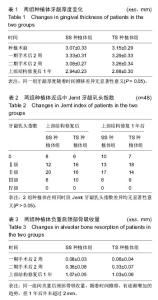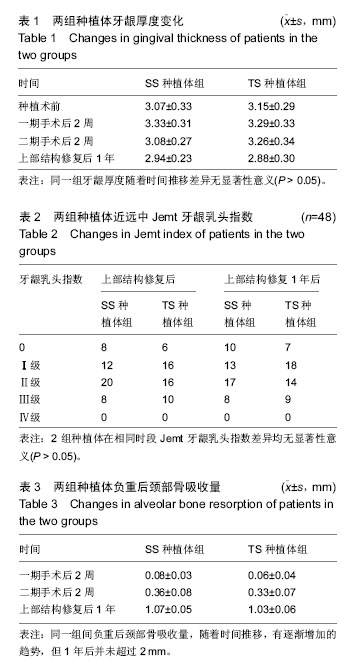| [1]Al-Marshood MM, Junker R, Al-Rasheed A, et al.Study of the osseointegration of dental implants placed with an adapted surgical technique.Clin Oral Implants Res. 2011;22(7):753-759.
[2]Talarico M,Vacarela A,Marzi GC. Clinical and radiological outcomes of 1- versus 2-stage implant placement: 1-year results of a randomised clinical trial. Eur J OralImplantol. 2011;4(1):13-20.
[3]Schroeder A,Pohler O,Sutter F.Tissue reaction to an implant of a titanium hollow cylinder with a titanium surface spray layer.SSO Schweiz Monatsschr Zahnheilkd.1976;86(7):713-727.
[4]Buser D,Mericske-Stem R,Bernard JP,et al.Long-term evaluation of non-submerged ITI implants.Part 1:8-year life table analysis of a prospective muhicenter study with 2359 implants. Clin Oral Implants Res.1997; 8(1):161-172.
[5]Albrektsson T, Zard G, Worthington P, et al. The long-term efficacy of currently us ed dental implants:a review and proposed criteria of success.Int J Oral Maxillofac Implants.1986;1(1):11-25.
[6]Jemt T.Regeneration of gingival papillae after single- implanttreatment.Int J Periodontics Restorative Dent. 1997;17(4):326-333.
[7]David L,Cochran M. Biologic width: a physiologically and politically resilient structure. Int J Periodont Rest. 2012;32(4):371-373. ?
[8]Sanavi F,Weisgold AS,Rose LF. Biologic widt h and itsrelation to periodontal biotypes. J Esthet Dent. 1998; 10(3):157-167.
[9]Berglundh T, Lindhe J. Dimension of the peri-implant mucosa. Biological width revisited. J ClinPeriodontol. 1996;23(10):971-973.
[10]Thupbach P, Glauser R.The defense architecture of the humanperi-implant mucosa: A histological study. J Prosthet Dent.2007;97(6 Suppl):S15-S25.
[11]Abrahamsson I,Zitzmann NU,Berglundh T,et al.The mucosal attachment to titanium implants with different surface characteristics:Anexperimentalstudyindogs. JClinPeriodontol.2002; 29(5):448-455.
[12]Chow YC, Eber RM, Tsao YP, et al. Factors associated with the appearance of gingival papilla. J Clin Periodontol. 2010;37(8):719-727.
[13]Fu JH, Yeh CY, Chan HL, et al. Tissue biotype and its relation to the underlying bone morphology. J Periodontol.2010;81(4):569-574.
[14]Lazzara IU,Porter SS.Platform switching:a new concept in implant dentistry for controlling post restorative crestal bone levels.Int J Periodontics Restorative Dent.2006;26(1):9-17.
[15]Gardner DM.Platform switching as a means to achieving implant esthetics.N Y State Dent J. 2005; 71:34-37.
[16]Choquet V, Hermans M, Adriaenssens P, et al.Clinical and radiographic evaluation of the papilla level adjacent to single- tooth dental implants.A retrospective study in the maxillary anterior region. J Periodontol.2001;72(10):1364-1371.
[17]Cochran DL,Hemann Js,SchenkR K,et al.Biologic width around titanium implants.A history analysis of the implantgingival junction around unloaded and loaded non-submerged implants in the canine mandible.J Periondontol.1997;68(2):186-198.
[18]Linkevicius T, Apse P, Grybauskas S,et al.The influence of soft tissue thickness on crest bone changes around implants:a l-yearprospective controlled clinical trial.Int J Oral Maxillofac Implants. 2009;24(4):712-719.
[19]Lillkevicius T,Aspe P,Grybauskas S,el al.Influence of thin mucosal tissues on crestal bone stability around implants with platform switching: a 1-year pilot study.J Oral Maxillofac Surg.2010;68(9):2272-2277.
[20]Atieh MA,Ibrahim HM,Atieh AH.Platform switching for marginal bone preservation around dental implants:a systematic review and meta-analvsis.J PeriodonIol. 2010;81(10):1350-1366. |

